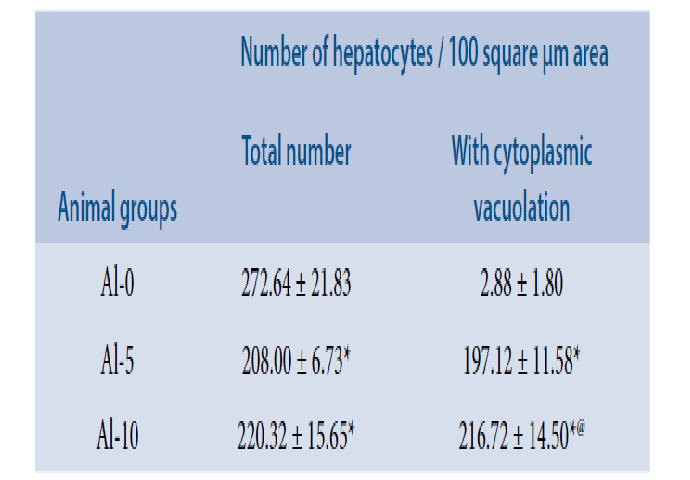Effects of Acute Aluminium Exposure on Liver Cytoarchitecture of Adolescent Female Wistar Rats
Abstract
Background and Aim: Exposure to aluminium is unavoidable, but there is no useful function of aluminium in our body. There are several reports demonstrating hepatotoxicity of aluminium. The current investigation was planned to evaluate the effects of acute exposure of aluminium to adolescent female Wistar rats. Methods: Adolescent female Wistar rats were intraperitoneally exposed to AlCl3 at a dose of 5 and 10 mg/Kg bw for 2 weeks. Results: There was no statistically significant change in the growth and size of livers of the exposed animals. However, the current doses of aluminium exposures caused significant reductions in total number of hepatocytes and significant rise in hepatocytes with cytosolic vacuolation. In addition, there were certain other histopathologic changes in the cytoarchitecture of hepatic tissues. Conclusion: In summary, this is the first report showing degenerative changes in liver by low dose of aluminium exposure for 2 weeks in adolescent female rats. This could be used as real-life hepatotoxic model in adolescent rats.






